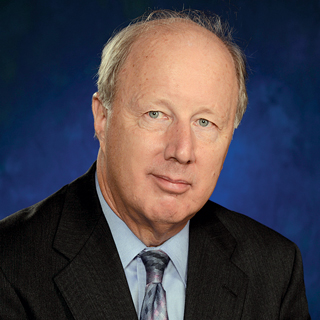
Forty-six years is a long time to do anything, but forty-six years as a nursing home administrator explains why I have no hair and tend to murmur acronyms in my sleep. When I realized that 2015 marked 50 years since the advent of Medicare and Medicaid, it seemed logical that someone should record how that profound event shaped who we are as a profession and how that history has a habit of continuing to repeat itself.
The result of that rare moment of clarity is a recently published book titled, “A Very Personal Look at the First 50 Years of Long Term Care.” My hope is that the book accomplishes two things: First, to provide a reference point for new or experienced people in the field to understand how the evolution of those two programs has profoundly influenced virtually every aspect of how we operate and how our day is structured. Second, to provide some modest funds to the American College of Health Care Administrators for their research efforts. One hundred percent of the proceeds of book sales (at $11.95 a copy) will go to benefit ACHCA.
I learned a great deal from this modest effort. As a profession, as well as a very large industry, we have reinvented ourselves multiple times over the 50-plus years that Medicare and Medicaid have been around. Each metamorphosis has brought about quantum leaps in improved quality, upgraded clinical abilities and huge challenges. What began as barely more than a custodial operation has today become an enormously complex and management intensive operation.
Today, under one roof we may be rehabbing individuals post-surgery in as short a time frame as two or three days. We may care for people with severe cognitive abilities who need assistance with virtually every aspect of their life. We often work with residents and families who are trying to cope with their own death or that of a close family member. How we provide specialized services in vent management, dialysis and a host of other situations is truly remarkable.
Payment for a rehab patient may be $500-plus a day, and the Medicaid resident in the next bed is receiving 24-hour-a day care for $150 a day. That’s a management issue worthy of a Harvard case study.
Our current role as a vital cog in the post-acute world, brings fresh challenges and opportunities and the “survival of the fittest” saying is incredibly accurate. The total number of nursing home beds as well as occupancy rates continues to decline. That is despite an enormous rise in Americans over the age of 75, which hits with a vengeance in 2021.
History can be a reliable indicator of the future. I find it fascinating that in my career, hospitals have changed their strategy multiple times regarding whether they should own and operate their own SNFs, and in 2016 the cycle has begun to repeat itself one more time. As my very wise Swiss grandmother used to say, “too late smart.”
Throughout our relatively brief history, our role as administrator, CEO, executive director, operations manager or whatever the current title is, has evolved in mostly positive ways. While some issues never change (“the laundry lost my mother’s prize underwear, which has been passed down for generations”), our role as the person in charge has become much more complex, more demanding and much more multi-disciplinary.
The constant is that whether someone is with us for three days or three years, we must never forget that we have an incredibly strong moral and ethical obligation to oversee the best care we can deliver. We acknowledge and correct the inevitable mistakes, and go home at the end of the day feeling comfortable that you are providing an environment that fosters caring, quality and appropriate safeguards.
It’s not easy work, but it is rewarding.
Bob Siebel, CNHA, FACHCA, is the author of “A Very Personal Look at the First 50 Years of Long Term Care.” He can be reached at [email protected]



